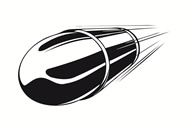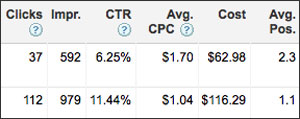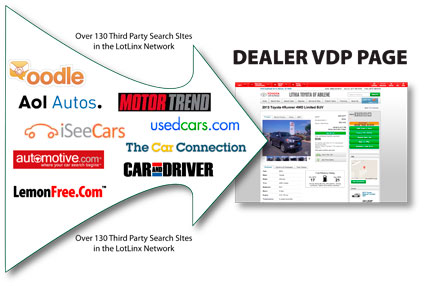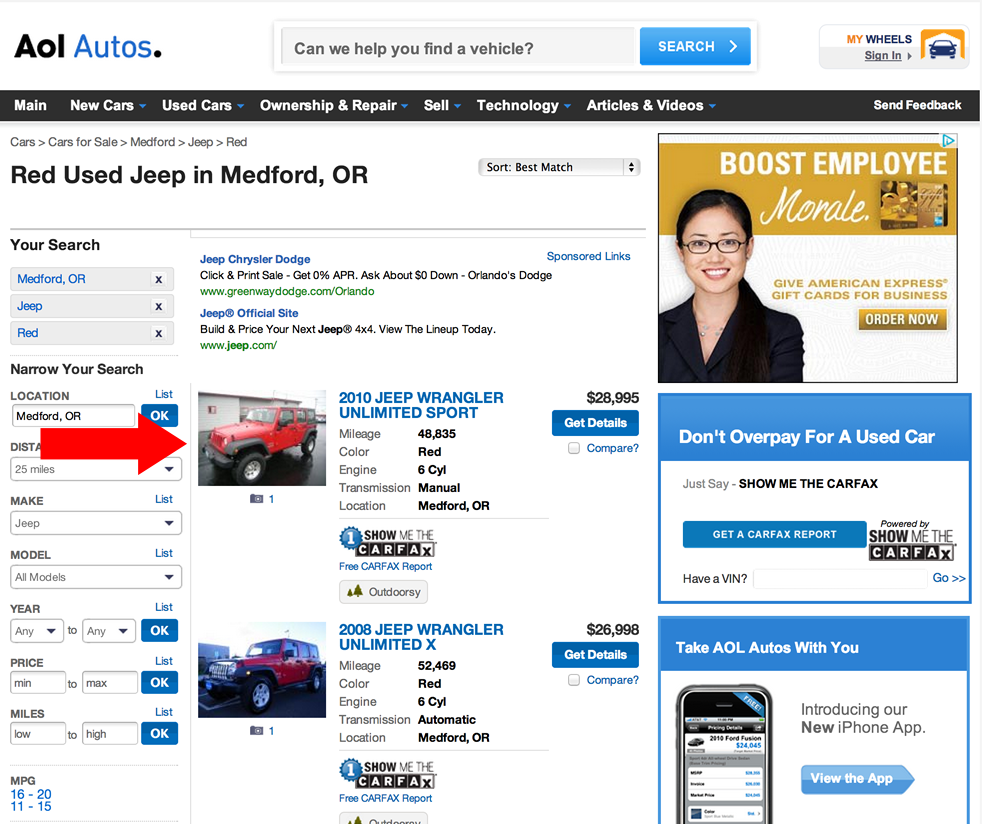Marketing professionals often recommend Google AdWords investments as part of a comprehensive digital marketing strategy. I have been a vocal advocate for AdWords in the automotive industry for many years, as dealers work to increase their visibility with car shoppers in the Zero Moment of Truth (ZMOT).
Recently, I was challenged to prepare an “ideal” marketing mix for car dealers who want to maximize their traditional and digital investments. I created a spreadsheet that listed mandatory and optional marketing investments for car dealers, to fill out a automotive marketing budget based on $300 per car sold.
That exercise made me do some soul searching. I had to prioritize which investments delivered the strongest results to increase the velocity of car sales. I came to realize that I have not done a great job at educating the automotive industry on the weaknesses of Google AdWords.
I have been voicing the strengths of AdWords for years, and I am not abandoning my old friend now. Dealers should continue to invest in AdWords, but with greater selectivity of campaign investments. AdWords investments should be paired with a commitment to inspect the ROI of the campaign strategies based on activities that are linked to increase the velocity of car sales.
AdWords Imperfections
Google AdWords is an imperfect system of advertising. It requires significant investments of time to get spending aligned with measurable results. Campaign testing is a required discipline for AdWords to be a success, it is not a “set it and forget it” marketing tool. Even specific demographic categories like “Auto Intenders” can fall flat in delivering a reasonable ROI.
When campaigns are optimized, AdWords can deliver quality traffic to a business website. The fact that AdWords is used by some of the most successful retailers in the world is proof that AdWords has a place in all digital marketing strategies. PCG operates very successful AdWords campaigns for its clients, and car dealers should continue to invest in AdWords strategies that deliver car shoppers.
AdWords requires human intervention and decision making based on the specific goals of the client. Automation can help, but automation without oversight can lead to AdWords campaigns with runaway, ineffective spending.
No advertising strategy is perfect, but AdWords has developed a reputation among some business owners as a magic bullet. The reality is that the best AdWords campaigns start as educated guesses and over time, with significant fine tuning, they can start to become cost effective.
Search Engine Marketing (SEM) campaigns are based on the combination of keywords and marketing professionals that have to guess the “intent” of the person using any specific keyword. This is one of AdWords greatest weaknesses; the keyword guessing game. AdWords is also limited by the website technology a business uses. If creative landing pages are limited by templated technology, AdWords results can fall short.
Building AdWords Campaigns
 If you wanted to create an Adwords SEM campaign to attract consumers interested in the new “2014 Ford F150” you might start with keywords like “2014 F150”, “2014 Ford F-150″,”New Ford F150”, “2014 Ford F150 Prices”, or “2014 Ford F150 Dealers.”
If you wanted to create an Adwords SEM campaign to attract consumers interested in the new “2014 Ford F150” you might start with keywords like “2014 F150”, “2014 Ford F-150″,”New Ford F150”, “2014 Ford F150 Prices”, or “2014 Ford F150 Dealers.”
After you match these keywords with appropriate ad copy, in an Ad Group, you would start the Adwords campaign. I typed “2014 Ford F150” in Google from my hotel room in Lexington Kentucky, and as you can see, a SEM ad was displayed. Is this ad effective? It can be if it is optimized properly.
Over time, adding negative keywords, changing match types, testing landing pages, and changes to ad copy should improve the initial campaign results for this ad group. Dynamic phone numbers and call recording should also be a standard investment with AdWords. For car dealers, more phone calls are generated by AdWords than lead forms.
Which brings up the question, “Have you listened to the phone calls generated by your AdWords campaigns lately?” Many AdWords campaigns designed to sell new or used cars generate a high percentage of service phone calls.
I have personally inspected AdWords campaigns advertising new cars that had over 30% of the calls ask for the service department. That in itself is not a bad thing, except it does not help the New Car Sales Manager reach their sales goals with his/her marketing budget.
It is also common in automotive AdWords sales campaigns that clicks generate a 3-5 second visit to the dealer’s website which most likely is to get a phone number or confirm an address. The best AdWords campaigns for car dealers are a mix of “Yellow Pages” directory lookups, service calls, and of course, sales calls. It is not the digital advertising sniper touted by some marketing experts.
The reality is that as hard as you try to generate campaigns that send incremental new/used “car shoppers” to your website, you are spending hundreds of dollars a month on clicks that fall short of that goal.
Tracking Car Shoppers
Car dealers are told that AdWords will generate leads and phone calls from car shoppers. Most dealers take that promise at face value. However, research has shown that less than 40% of car sales are associated with a prior lead or phone call. How do dealers measure the impact of AdWords investments on the stealth online shopper? These stealth shoppers visit the dealer’s website but their first contact is when they show up on the showroom floor as a fresh up.
 The lack of visibility on the impact of AdWords on car shoppers is in part created by the current reports car dealers receive from their AdWords vendors, PCG included.
The lack of visibility on the impact of AdWords on car shoppers is in part created by the current reports car dealers receive from their AdWords vendors, PCG included.
Dealers are presented with reports on Ad Impressions, Cost per Click (CPC), and Cost per Lead (CPL) but these statistics are misleading. Current AdWords reports only represent a fraction of their overall monthly sales because of the stealth shopper phenomena. Take a minute to absorb that statement.
A key metric that we are adding to our AdWords reports is Cost per Shopper (CPS) and Cost Per VDP View (CVV), since these metrics apply to all shoppers; those who submit a lead and also the stealth shopper. It is time that we start to look at AdWords campaigns that are “designed” to generate new and used cars sales in terms of the shoppers that they generate (someone who looks at least one VDP) and the VDP views that each paid click generates.
Would you be upset if only 1 in 10 clicks (10%) from your used car campaign visited a used car VDP? Would you be upset that 1 in 12 (8.3%) clicks from your new car campaigns are visiting a new car VDP? Well, if you answered “yes” to either of those questions, you might be shocked that it could very well apply to some of your AdWords campaigns. If you are paying $1.50 a click, are you willing to spend $15-$20 for one shopper or one VDP view?
Generating Cost Effective VDP Views
This comes to the third imperfection with AdWords; there is a limit to how many VDP views Adwords can generate. Some campaigns are very good at generating VDP views at a reasonable cost (under $4) and others are insanely expensive (over $12). It is not until you view your AdWords campaigns with the Cost Per Shopper (CPS) and Cost Per VDP View (CVV) that this harsh reality is seen.
Once again, your digital marketing strategy should include AdWords campaigns, but dealers have to stop throwing money at AdWords like every dollar is going to generate a positive result!
Since the increase in VDP Views is directly associated with the velocity which cars are sold on the dealer’s lot, dealers need new ways to increase VDP views at a reasonable cost. In fact, a recent Cobalt study showed that as little as 12 additional VDP views on a vehicle can result in the vehicle selling 44% faster!
There are some intelligent campaigns that drive direct VDP traffic from Adwords, like Dealer.com TCD software, but dynamic inventory campaigns are just one of many campaigns run for car dealers.
It’s the other campaigns, designed to sell new and used cars, that need to be inspected. Your Display advertising campaigns should be inspected. Your new car “branding” campaigns need to be inspected and the list goes on. When you do, you will need to make some decisions because all campaigns will not deliver equally impressive results.
Alternatives To Driving Shoppers
If you are brave enough to see what your AdWords campaigns are costing you to generate a VDP view, you will likely ask for campaign alternatives that have a lower CPS and CVV. You will want to find strategies that generate car shoppers and not tire kickers.
LotLinx is one of the solutions I am recommending to dealers because it attracts car shoppers and takes them directly to the dealer’s Vehicle Detail Page (VDP) for a car they select. If a consumer finds one of your vehicles in a Search Results Page (SRP), like the red 2010 Jeep Wrangler shown above, they have already self selected themselves as a car shopper. They visited a classified advertising website, like AOL Autos, and entered their search criteria to narrow down the search.
 When they see the photo of your red Jeep Wrangler, with the year, make, model, and price and decide to click on the photo/listing to learn more about the vehicle, they qualify as a car shopper, interested in your car.
When they see the photo of your red Jeep Wrangler, with the year, make, model, and price and decide to click on the photo/listing to learn more about the vehicle, they qualify as a car shopper, interested in your car.
Then Lotlinx deep-links that click directly to the dealer’s Vehicle Details Page (VDP). LotLinx delivers a highly efficient PPC event which accelerates the connection of the consumer in the ZMOT to the dealer’s website.
 That’s why I compare Lotlinx to an automotive AdWords campaign on steroids. AdWords can’t hold a candle to creating a more qualified click, but then again they know that already.
That’s why I compare Lotlinx to an automotive AdWords campaign on steroids. AdWords can’t hold a candle to creating a more qualified click, but then again they know that already.
Why do you think they are coming out with Google Cars?
By adding photos and prices of cars in a Google SERP, they are pre-qualifying consumers who are looking to buy a car, not service their car.
Lotlinx accomplishes the same pre-qualification using over 130 automotive classified websites. It’s not the same strategy as Google Cars, but it produces the right traffic to increase the velocity of car sales.
Summary Thoughts
Dealers need to understand the limitation of Google AdWords; spending more does not necessarily increase car shoppers. In many cases, spending more just inflates clicks with traffic that does not contain car buyers.
AdWords is an effective part of a comprehensive digital marketing strategy. The key is how you measure the investment and the traffic that AdWords generates. Reporting metrics have to change and evolve for car dealers.
When you consider the costs associated with connecting car shoppers and buyers to your Vehicle Detail Pages (VDP) on a dealer’s website, LotLinx is a serious weapon in a dealer’s digital marketing arsenal. It compliments the campaigns that are working in AdWords.
If you identified AdWords campaigns that had a high cost per VDP View, and switch those funds to LotLinx, you will be rewarded with more shoppers at a lower cost. If you want to accelerate car sales, and inventory turns, you need to get consumers on your website looking at your vehicles. Lotlinx accelerates car shoppers introduction to your inventory and gets them to your website, where you can chat with them, and guarantee the exclusive lead if they call or submit a lead.
It’s time to create a better balance of marketing dollars that will increase the velocity of car sales. It will include Google AdWords, but it will be with a more sober investment in building campaigns that have the right ROI, based on CVV and CPS.
Products like LotLinx are delivering the exact strategy that dealers need to sell more cars, so learn more about the product here: LotLinx Introduction. If you have any additional question, give our LotLinx team a call.

